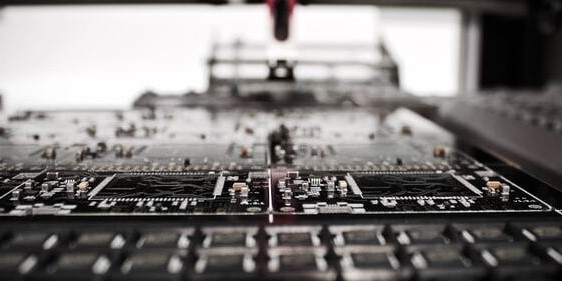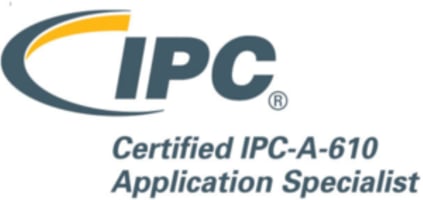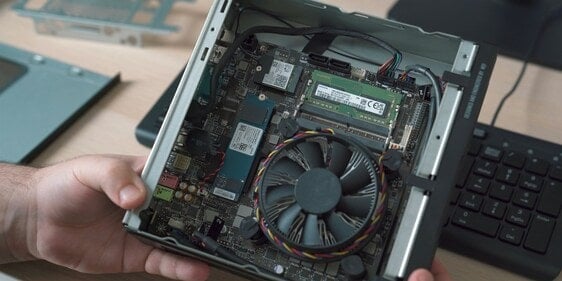Electronic manufacturing services
understanding all aspects
What defines EMS?

Electronic manufacturing services (EMS) refers to the companies that design, manufacture, test, distribute, and provide return/repair services for electronic components and box build assemblies.
EMS and the more universal term contract manufacturer (CM) are often interchangeably used. They both provide services to original equipment manufacturers (OEM).
They offer a wide range of services for the entire life cycle of electronic products. From design, to manufacturing and supply chain, to testing and quality control.
Read the full article or go through the table of content to find the exact chapter you need.
Electronic manufacturing services are integrated into many supply chains of the OEMs around the world. With their capabilities they offer great support for companies, allowing their customers to benefit from technological knowledge, supplier network, and production facilities.
Read about the advantages in chapter 3.
Design and prototyping
EMS providers often play a big role in the first stages of the development process. With their technical knowledge and expertise. In the early stages, they support design, testing, and prototypes.
PCB and PCBA design
Designing PCBs is no easy task. Nonetheless, it’s vital for a well-functioning electronic device. The PCB and PCBA are what connect the different components in the device. Essentially controlling the functionality.
If you are interested in learning about the process of a PCBA, you can read this article about both PCBs and PCBAs.
Prototyping services
Many electronic manufacturers offer to make prototypes. This is of big value in the development phase, because it allows testing ideas at low cost.
Prototyping lets the customer identify design flaw and make improvements before starting to mass produce the products.
Testing and quality control
A vital part of electronic manufacturing is testing and quality control. It is a complex set of steps because of the many different parts that must be tested – both throughout the manufacturing process and in the end.
In-circuit testing (ICT)
ICT, a white-box technique, is a way of testing PCBs. This helps manufacturers test if the components function as needed, and if they meet the specifications and capabilities.
Functional testing
Functional testing is a black-box technique that test whether a device functions as intended. This can be done based on a certain set of requirements for the device. Or it can be done based on different business scenarios.
Quality assurance standards
There are many standards and certifications that EMS providers can have. Some are for general electronic manufacturing, others are industry-specific.
One of the most used and required standards is the ISO 9001. This standard supports a robust quality management system in electronic manufacturing.
Get a list of 19 certifications for electronic manufacturing here.
Box build assembly
A box build refers to a fully functional electronic device. It is often defined as an enclosure of electronics. Essentially the final product.
The task for the EMS is to assemble this. This means procurement of mechanical parts and electronic components, PCB assembly, and the final box build assembly.
This is a complex process and sets high requirements for technical knowledge and experience.
Are you interested in box build assemblies? In this article you will learn about all stages, from PCB to testing of the final box build.
1. Expertise and specialisation
EMS providers are specialists in electronic manufacturing. This means that they have in-depth knowledge of the latest technologies, materials, and manufacturing processes.
You can benefit from this knowledge. The EMS look at your drawings and ideas in a different perspective. Most likely they can optimise the processes, enhancing performance and reliability.
2. Cost efficiency
If you outsource your electronic manufacturing to an EMS you will probably benefit from more cost-efficiency than establishing and maintaining in-house facilities.
EMS providers profit from bulk purchasing power. This means that they can offer cost savings for clients in terms of material and component procurement.
They also have the assembly and workforce ready to go. You do not have to invest in equipment, employer education, or warehouses to get started.
3. Flexibility and scaleability
Many OEMs experience fluctuations in market demand.
Using an EMS will give you flexibility in production volume because of their supplier network and production setup. This allows businesses to scale up or down based on market conditions without significant capital investment.
4. Time-to-Market acceleration
Electronic manufacturing services are geared to get you on the market quickly.
With experience and efficiency in prototyping, testing, and production they reduce lead time and time-to-market. This is a big advantage for many OEMs in a market of quick changes.
5. Advanced technology and equipment
Advanced technology and manufacturing equipment are a necessity for EMS providers to survive in the market. Not only to meet customer requirements but to stay on top of competitors.
This ensures that the electronic devices produced meet or exceed industry standards and take advantage of the latest advancements in technology.
6. Quality assurance and testing
Most EMS providers have stringent quality control measures throughout the manufacturing process.
With testing, including in-circuit testing, functional testing, and quality inspections, they ensure that the final product meets the required standards and specifications.
7. Focus on core competencies
This 7th point serves as a conclusion of all the mentioned advantages. Instead of worrying about gaining expertise, building supplier networks, investing in equipment, and developing quality control systems, you can spend your time on your business.
Whether your core competencies lie in product design, marketing, or research and development this is where your work should be.
Certificates establish a framework for ensuring quality and production processes. Therefore it is important to consider which are relevant to your products.
Read this article for further explanation of the certificates.
1. ISO 9001:2015 (Quality Management System)
2. ISO 14001:2015 (Environmental Management System)
3. ISO 13485:2016 (Medical Devices - Quality Management Systems)
4. ISO 45001:2018 (Occupational Health and Safety Management System)
5. IPC-A-610 (Acceptability of Electronic Assemblies)
6. IPC J-STD-001 (Requirements for Soldered Electrical and Electronic Assemblies)
7. RoHS (Restriction of Hazardous Substances) Compliance
8. CE Marking (Conformité Européene)
9. UL Certification (Underwriters Laboratories)
10. REACH Compliance (Registration, Evaluation, Authorization, and Restriction of Chemicals)
11. WEEE Directive Compliance (Waste Electrical and Electronic Equipment)
12. Conflict-Free Minerals Certification
13. ISO/IEC 27001:2013 (Information Security Management System)
14. ISO 16949 (Quality Management System for Automotive Industry)
15. ESD (Electrostatic Discharge) Control Certification
16. TÜV SÜD Certification
17. FCC (Federal Communications Commission) Compliance
18. Nadcap (National Aerospace and Defence Contractors Accreditation Program)
19. Supplier Ethical Data Exchange (SEDEX) Certification
Choosing the right EMS is vital for the success of your electronic product.
Not all electronic manufacturers have the same experience and knowledge. Some a suited for one type of product, some for others.
Here are 4 questions that can help you in the decision phase:
1. What box build assemblies have the EMS provider done before?
2. Where are the EMS provider's suppliers and assembly plants placed?
3. How does the EMS provider work with quality assurance?
4. Can the EMS provider help you design and develop?
Other post that might interest you
- EA - Connect
- April 29, 2024
- EA - Connect
- February 19, 2024
- EA - Connect
- January 26, 2024



